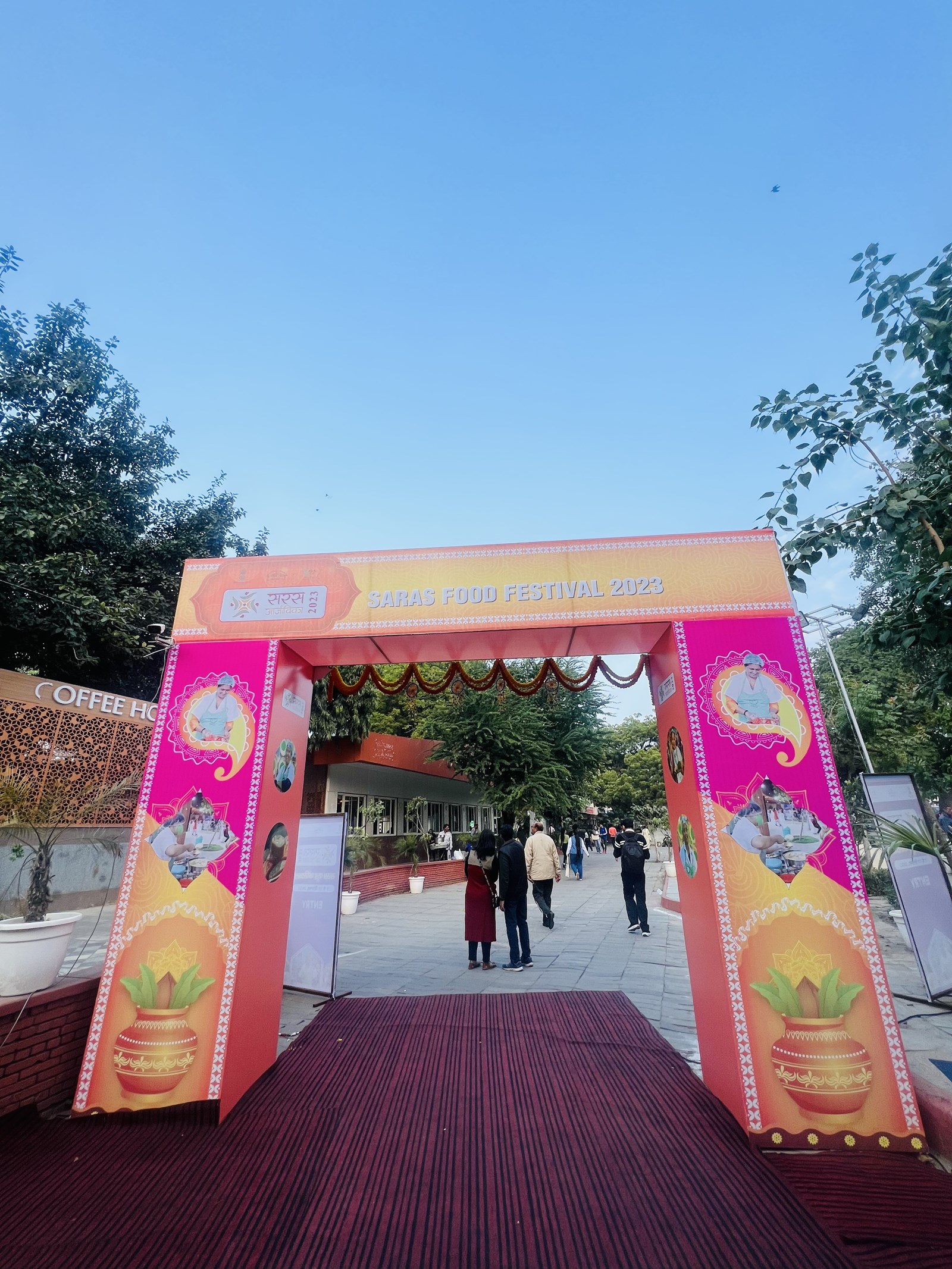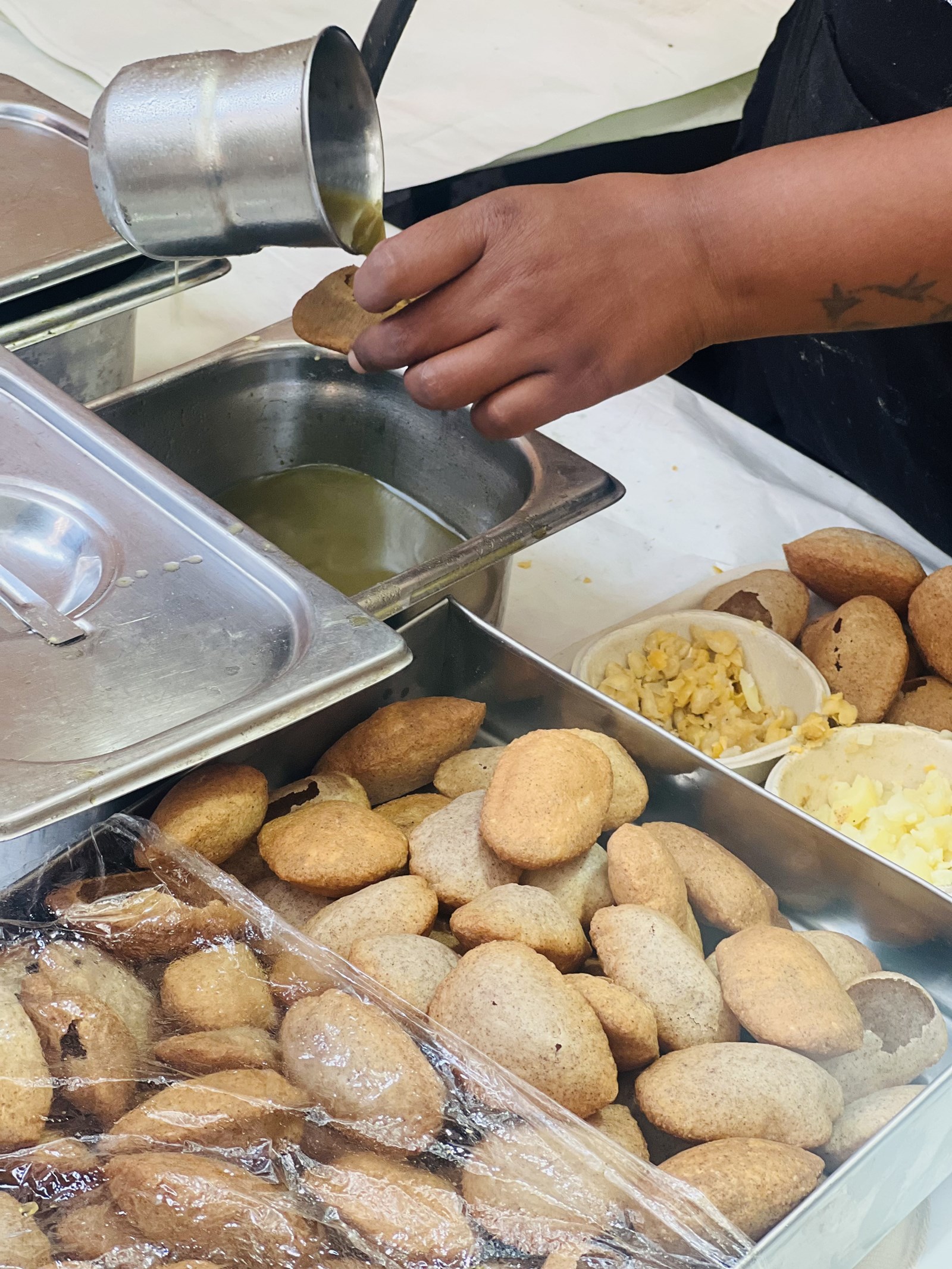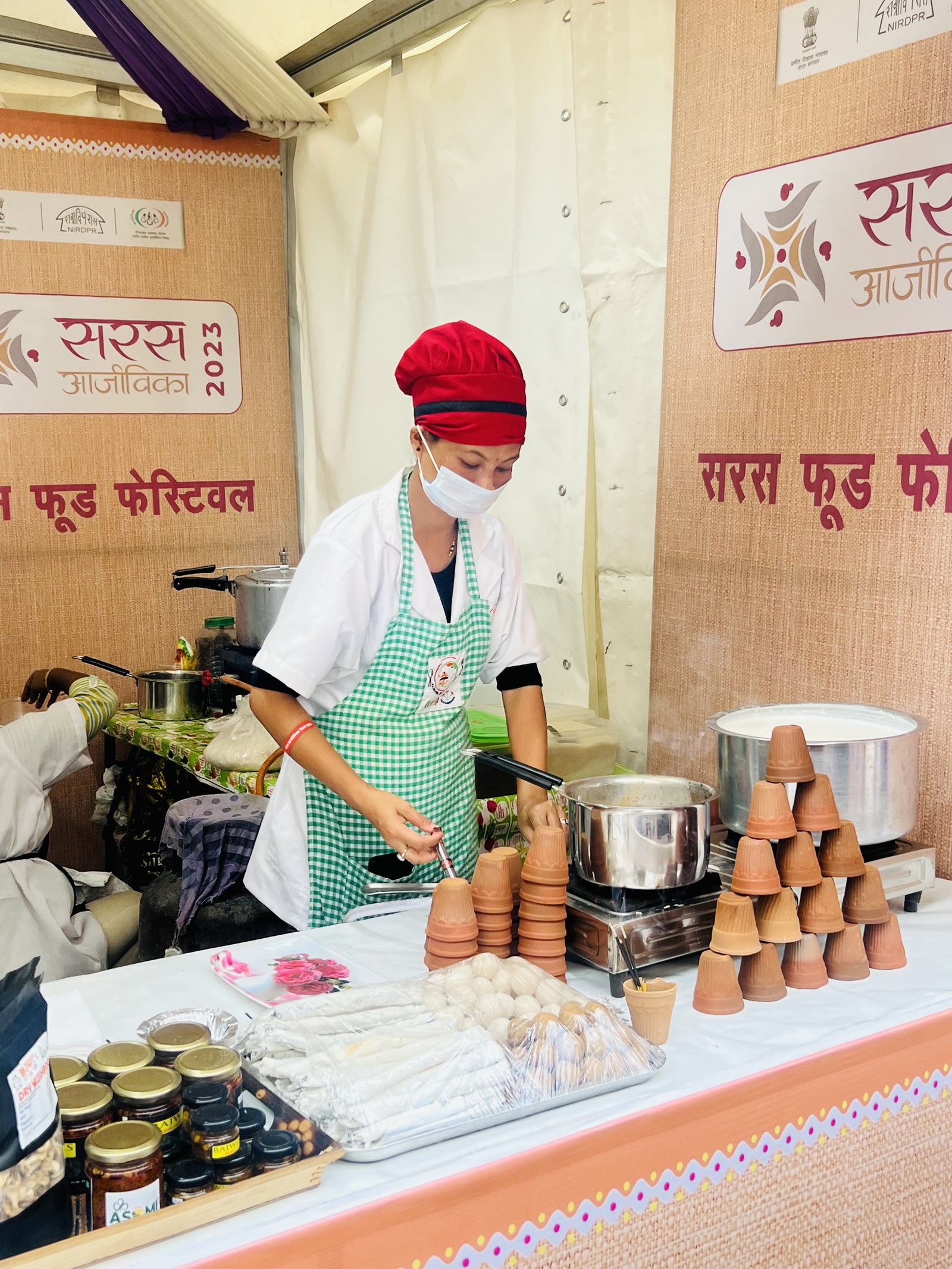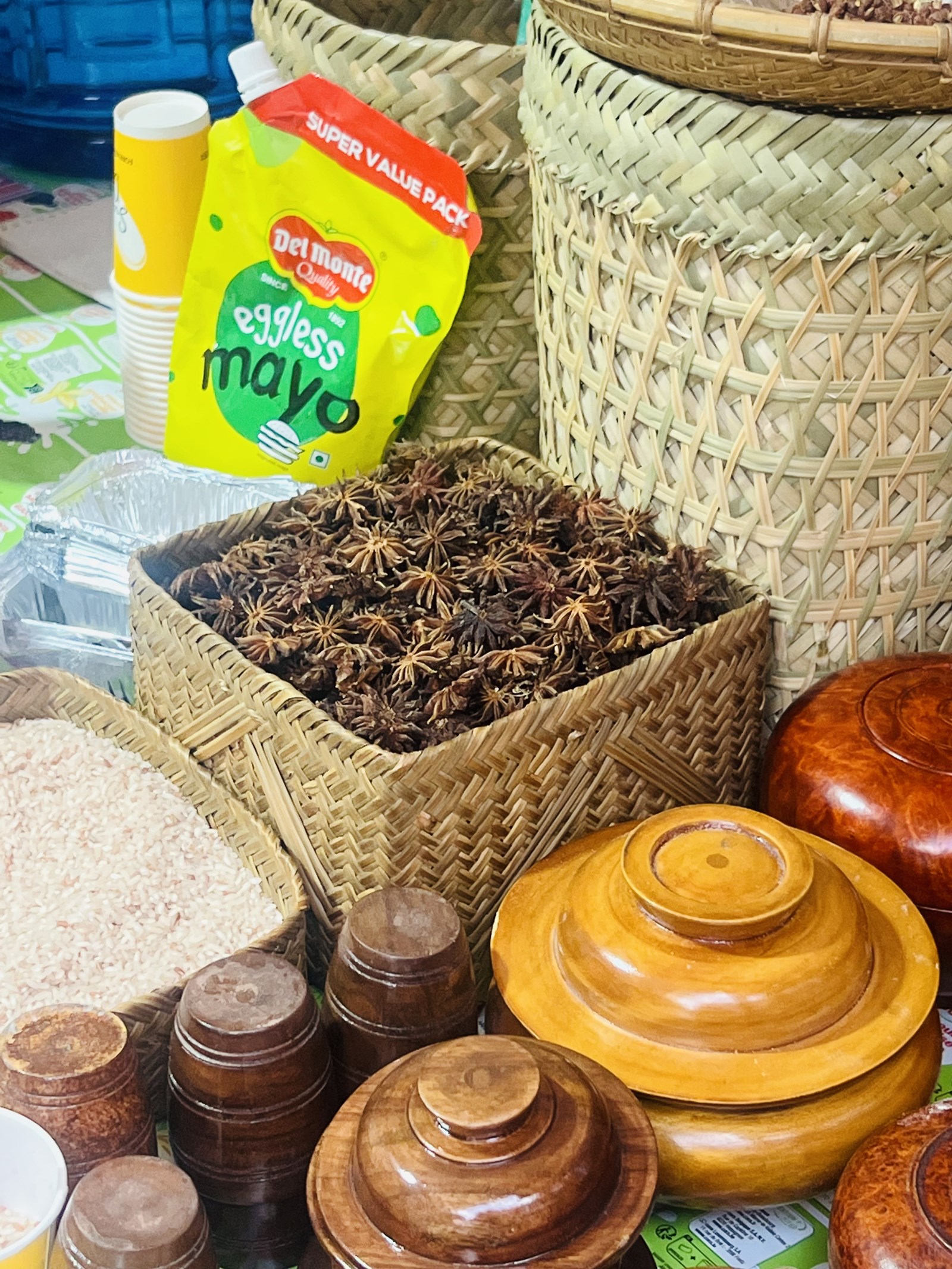[ad_1]
Shaily (53) from Radhe Krishna self-help group (SHG) or Pahari Rasoi from Doiwala block in Uttarakhand grows Mandua (Ragi) back in her village in the hills. She, along with other women from different SHGs, runs the Pahari Haat, also known as Pahari Rasoi, cooking and selling unique recipes made of millets, especially Mandua or Ragi. After making good sales at the India International Trade Fair (IITF) this year, the group moved their stall to Saras Food Festival, organised by the Ministry of Rural Development under the aegis of Aajeevika, or the National Rural Livelihoods Mission (NRLM), presently being hosted at Handicrafts Bhawan, Saras Gallery, Baba Kharak Singh Marg from December 1 to 17.
A confluence of traditional recipes, indigenous cuisines, cultures, and flavours, the Saras food festival showcases various delicacies, specialties, and cuisines from over 21 states, exhibiting the talents of over 150 women entrepreneurs powered by Aajeevika – National Rural Livelihood Mission (NRLM) supported self-help groups (SHGs).
 Colourful entrance to the Saras Food Festival at Baba Kharak Singh Marg. (Source: Swasti Pachauri)
Colourful entrance to the Saras Food Festival at Baba Kharak Singh Marg. (Source: Swasti Pachauri)
“Everything is provided to us by the government, from eco-friendly utensils, clean drinking water bottles, kiosks, and other necessary materials. We are excited to contribute to the space of “Mota Anaaj” or millets and do our bit, as Mandua is bringing global attention to India.” says Shaily in Hindi, wearing a traditional Kumaoni Nath (nose ring).
Right after the IITF concluded at Pragati Maidan at the end of November, SHG members, rural chefs, artists, and handicraftsmen and women gathered at Saras Gallery – a strategic venue to host regional specialties because it is right next to the state emporiums, which showcase handicrafts and handlooms from the different states in the country.
 Mandua or Ragi Golgappe from Uttarakhand. (Source: Swasti Pachauri)
Mandua or Ragi Golgappe from Uttarakhand. (Source: Swasti Pachauri)
Delhi sees various editions of the Saras Aajeevika festivals (melas) celebrating Indian handicrafts, handlooms, indigenous talents, and regional recipes. This festival edition showcases handicrafts, Pashmina, and Aari work embroidery from Jammu and Kashmir at a separate pavilion. Some indigenous specialties available here include Kashmiri Kahwa tea with saffron, dry fruits from the state, and the traditional “Namak ki chai” or Noon chai.
Women like Shaily from Radhe Krishna SHG specialise in preparing authentic recipes like Jhangore (barnyard millet) ki Kheer, Mandua momos, traditional bal mithai, and Mandua pani puri. The ragi/ mandua pani puri counter attracted many people because of the considerable impetus the Government of India has given to millets, as 2023 has been commemorated as the International Year of the Millets. A plate containing 12 stuffed puris is available for INR 100 at the festival.
 Assamese tea. (Source: Swasti Pachauri)
Assamese tea. (Source: Swasti Pachauri)
Shaily and other women prepared ragi dough and fresh puris at the Kiosk. Upon asking how these initiatives help other women back home, she mentioned why state-oriented efforts promoting regional specialties help curb migration to the cities and keep families together. She said that all the women in the village participate in these activities, indicating solidarity, and bonding over cooking is tremendously helpful in honing their entrepreneurial skills.
Like Shaily, Dorjee Chojon (31) from Lubrang SHG, Arunachal Pradesh, is busy preparing “shiitake” mushroom momos and ethnic butter tea in the traditional vessel used for the same. The group has ten women, and she says initiatives such as these have economically empowered them. In the fields back home, they engage in rice farming. On the stall, she has put some indigenous varieties of star anise, spices, and rice they brought from the state. Mushroom entrepreneurship and shiitake cultivation have been encouraging women-led enterprises in northeastern states.
Decorated with beautiful lights and lanterns hanging from old heritage trees, Saras presents innate entrepreneurial talents and promotes rural food entrepreneurship from different parts of the country. Special chai and litti chokha from Bihar, Rajasthani gatte ki sabzi, seasonal makke ki roti, and sarson ka saag with gur from Punjab, Kashmiri kahwa tea and “namak ki chai” or noon chai, tea from Assam, and black rice kheer are some exciting recipes to try among a host of other delicacies to relish from different corners of the country. Other stalls showcasing handicrafts are Khurja, Uttar Pradesh pottery works, Channapatna toys from Karnataka, and Madurkathi mat works from West Bengal.
 Star anise and rice from Arunachal Pradesh. (Source: Swasti Pachauri)
Star anise and rice from Arunachal Pradesh. (Source: Swasti Pachauri)
Overall, the festival’s management of engaging an active citizenry presents new opportunities. Makeshift washbasins, dining areas, announcements encouraging people to try different cuisines, information about the traditional recipes, and a testimonial board with visitors’ messages are welcome steps in making the festival genuinely participatory while ensuring interaction among people and rural SHG members. Such festivals also increase awareness around rural livelihoods and educate citizens about women-led entrepreneurship and the importance of traditional or homemade food, serving as essential advocacy measures.
Perhaps more stalls and kiosks encouraging other women enterprises, who are engaged in preparing other delectable delights like jams, pickles, and forest produce, could have also been showcased in festivals like how it is done in festivals organised by the IITF, Surajkund, Delhi Haat, and Saras Aajeevika, where a vast array of products are promoted. To have Indian specialties all under one roof is a welcome step in further strengthening the objectives of schemes such as ‘Ek Bharat Shreshtha Bharat,’ encouraging cultural exchanges and integration while promoting women-led enterprises and cultural capital.
[ad_2]





